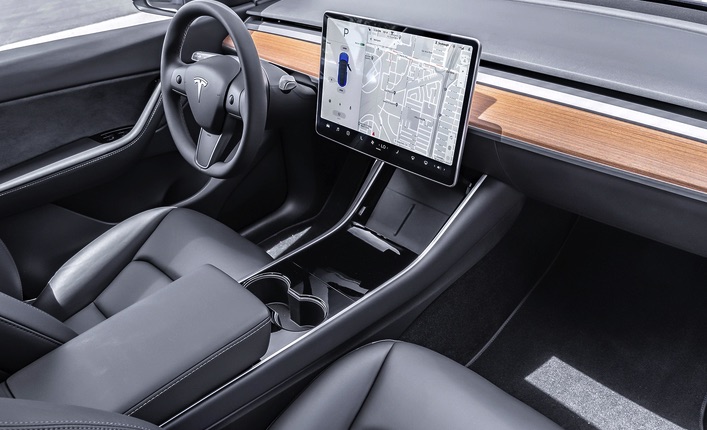Along with a mastery of basic social skills, it appears that recession is another thing to which Elon Musk has full immunity.
Yesterday, Tesla (NASDAQ: TSLA) reported $8.77 billion in revenue in its Q3 earnings report, topping Wall Street expectations by more than half a billion dollars.
The company now has $14.5 billion in the bank and is operating at a 6.3% margin. If things continue moving along this path, the company expects to hit half a million deliveries by the end of the year.
All of this, in the midst of the worst global recession in decades.
By contrast, Toyota (NYSE: TM), the world’s biggest car company by revenue, has watched sales decline by a staggering 21% over last year, and share price stagnate, stutter, and stumble.
Check out a comparison of the two stock charts to determine for yourself which batch of shareholders is happy and which is waiting in fading hopes of some sort of a return to normalcy.


As I write this, Tesla shares are up another 4% in pre-trading and Elon Musk continues to march towards yet another tranche of the biggest bonus ever awarded to a CEO in the history of capitalism.
But what makes Tesla so special? Why is its market capitalization more than twice that of Toyota’s ($393 billion versus $185 billion) despite the fact that it delivers, even in a record year, as many units as Toyota does in a bad quarter?
Unit price has a lot to do with it, of course, as Tesla remains a luxury brand whereas Toyota always has and always will be known as a mass-market carmaker.
But when it comes to investor confidence, the name of the game isn’t deliveries or revenue… it’s all about the future.
Cars Will Never Be the Same
More than any other carmaker, Tesla is viewed by its shareholders as a torchbearer for things to come. Tesla’s product line is 100% electric. Its cars feature unprecedented levels of automation. One look into the interior of a Tesla, versus anything else on the road (even a top of the line BMW, as pictured below), paints a very telling portrait.


There simply is no comparison. One is an incremental development of everything that came before it. The other has little in common with anything else on the market save for the seats and the steering wheel.
And soon enough, even that steering wheel may get deleted.
It’s through that commitment to automation that Tesla is addressing some of today’s and tomorrow’s most exciting and world-changing technological trends.
One of the plans currently in the works: a driverless taxi fleet.
The Best Free Investment You’ll Ever Make
Join Wealth Daily today for FREE. We’ll keep you on top of all the hottest investment ideas before they hit Wall Street. When you become a member today, you’ll get our latest free report: “The Nvidia Killer: Unlocking the $100 Trillion AI Boom.”
It contains the most promising AI companies and sectors poised for explosive growth. Our team of expert analysts has conducted thorough market research to uncover a hidden gem currently trading at just $2.
After getting your report, you’ll begin receiving the Wealth Daily e-Letter, delivered to your inbox daily.
All Roads Lead to This: The Smart City
Musk stated back in April that Tesla will launch its “robotaxis” before the close of 2020. His words must be taken with a grain of salt, of course, but they also cannot be disregarded. Despite all of the bluster and unilateral announcements made at all hours of the night — perhaps while smoking weed — Musk has a pattern of delivering, even over-delivering, on his promises.
Driverless cars, whether in the form of city-run taxis or as consumer vehicles will play a crucial role in the “smart cities” of the future.
These smart cities, built upon foundations of universal interconnectivity between vehicles, roads, buildings, and people, promise to transform modern society in a way never before achieved.
No single technological development — not radio, the telephone, the television, or the internet itself —has been able to achieve what the smart city and all of its working parts will before the end of this decade.
The reason is that the smart city isn’t a single technological advancement but, rather, a combination of a number of transformative technologies all working in perfect concert. From the smallest sensors gathering and feeding information from a single support beam of a bridge all the way up to the central mainframes that process information from billions of such sensors, smart cities will turn our chaotic modern population centers into massive, super-intricate electronic organisms.
At the heart of it all will be the next generation of internet: 5G.
The Linchpin Technology of the 21st Century
Every driverless Tesla, every sensor, every wireless device carried by smart city inhabitants will depend on future 5G networks to stay online and in touch indefinitely.
Without it, all of the information generated by the billions of new sensors and devices will come to a grinding halt. Instead of producing and processing huge amounts of data, everything will shut down in a huge logjam of zeros and ones.
As of this moment, this bright, sparkling vision of humanity’s future remains just that: a vision.
Our 4G networks are already operating at capacity, and the fledgling 5G network is simply not where it needs to be to sustain the orders-of-magnitude increase in data flow.
There are two hurdles that will need to be overcome. The first is bandwidth.
That problem will be addressed later this year when the FCC opens up a whole new spectrum, called C Band, to civilian use. The date for that is already set: December 8. On that day, the FCC will auction off chunks of C Band to major wireless carriers like AT&T.
That leaves the one major hurdle: data storage.
Final Piece of the Puzzle
Current technology does not allow for long-term data storage in the absence of an external power source. All mainstream memory storage requires either batteries or hardwiring to collect, store, and transmit data. In a world where billions of sensors are buried in every street corner and in the structural members of every new building, external power sources are simply not feasible.
Maintenance alone makes the whole concept a non-starter, let alone the massive power and heat-dissipation requirements.
For true smart cities to spring up across the globe, we need a stable, power-independent data storage medium.
Today, there is an answer to this dilemma.
One Arizona-based company has developed just such a technology. It’s already seen limited use in hostile environments such as space, but right now, plans are being laid to implement it at ground level.
A stable, maintenance-free, power-independent data storage technology that will allow for years of reliable operation — precisely what the smart city concept needs to exist.
This company is currently tiny. Its stock trades for less than a thousandth of Tesla’s, but soon enough, this patented solution will become essential to all of Tesla’s long-term plans.
You can imagine where it will go in the next few years. The market could be worth trillions.
I saw this one coming months ago and rushed a research report out to my readers. Since then, shares have already appreciated more than 20%. By all indicators, however, this is just the beginning.
There’s no way of telling where it could go, even in just the next couple of months.
To get the full story, click here.
Fortune favors the bold,

Alex Koyfman
His flagship service, Microcap Insider, provides market-beating insights into some of the fastest moving, highest profit-potential companies available for public trading on the U.S. and Canadian exchanges. With more than 5 years of track record to back it up, Microcap Insider is the choice for the growth-minded investor. Alex contributes his thoughts and insights regularly to Energy and Capital. To learn more about Alex, click here.


